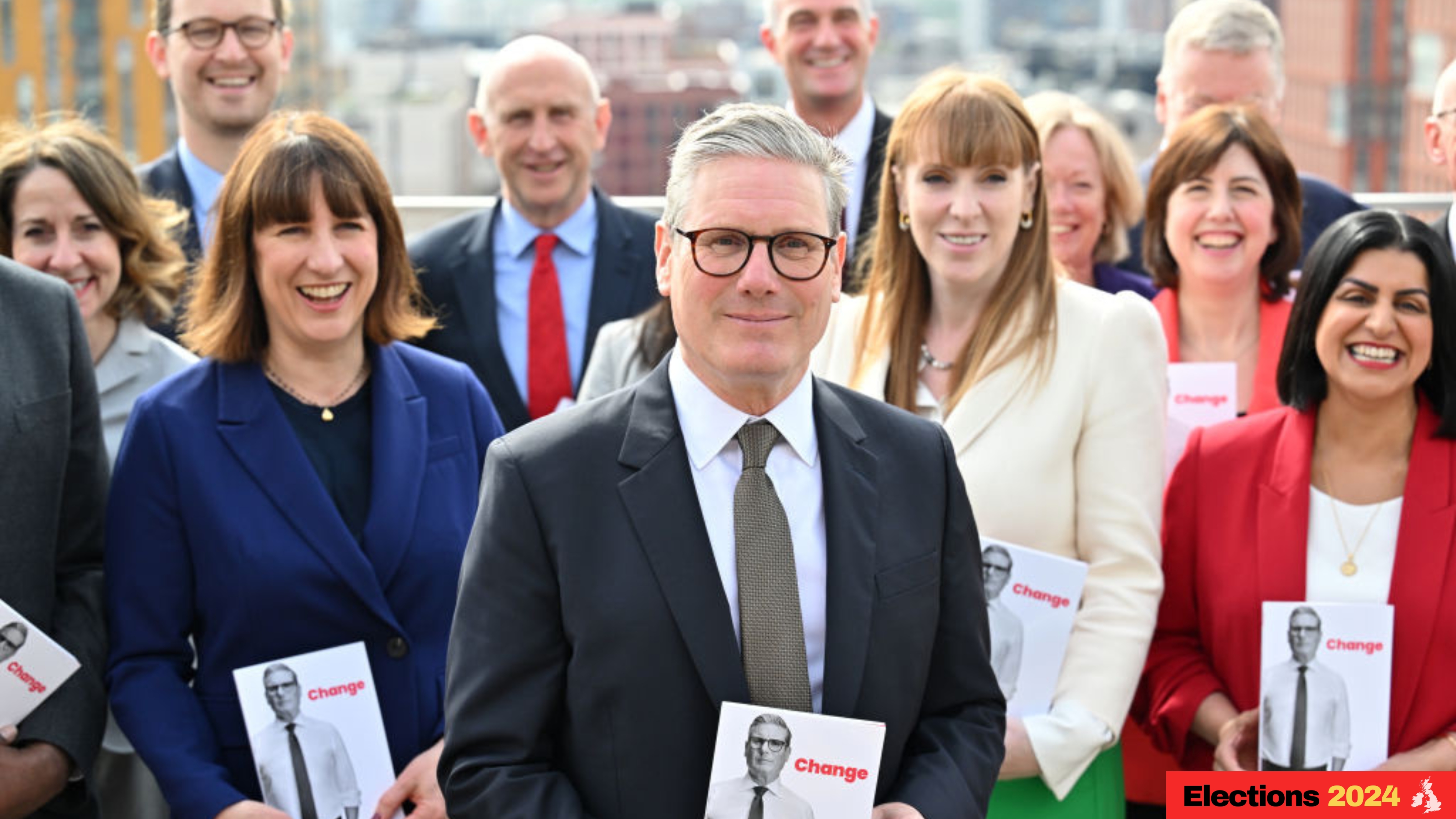Labour confirms commitment to state pension triple lock - but two problems remain
Keir Starmer has promised to keep the triple lock if Labour wins the general election. We look at how the Labour pledge differs to the Conservatives’ “triple lock plus” - and why two problems still remain for Starmer


Labour has re-confirmed its commitment to keep the state pension triple lock.
The Labour party’s manifesto, unveiled today in Manchester, stated simply: “Labour will retain the triple lock for the state pension.”
The triple lock means that the state pension rises every April in line with inflation, average earnings or by 2.5% – whichever is higher. In April this year, the state pension increased by 8.5% (the wage growth figure).
MoneyWeek
Subscribe to MoneyWeek today and get your first six magazine issues absolutely FREE

Sign up to Money Morning
Don't miss the latest investment and personal finances news, market analysis, plus money-saving tips with our free twice-daily newsletter
Don't miss the latest investment and personal finances news, market analysis, plus money-saving tips with our free twice-daily newsletter
Keir Starmer had previously said he would protect the pensions triple lock “for the duration of the next parliament”.
The triple lock is a controversial policy. Some experts believe it is important to ensure pensioners’ incomes rise each year and to help avoid poverty in old age. But others warn of the huge costs associated with the triple lock, and that it could cause intergenerational unfairness. The Institute for Fiscal Studies, a think tank, has called for the triple lock to be scrapped.
Nonetheless, with exactly three weeks to go until the general election on 4 July, industry experts have broadly welcomed Starmer’s pledge to keep the triple lock.
Becky O’Connor, director of public affairs at pension provider PensionBee, comments: “The pledge by Labour to keep the triple lock is likely to be popular. The state pension is a vital safety net for most retired households and must be preserved at a meaningful level. This is relevant not only for today’s pensioners but also for future generations.”
A survey by TPT Retirement Solutions, a workplace pension provider, of 2,011 workers revealed that 63% of those aged 55 or older want the triple lock to be maintained.
But some experts warn of problems along the way for Starmer, if Labour were to form the next government. How long is the policy sustainable for? And what should be done about the triple lock triggering an income tax bill for pensioners?
We look at how Labour’s triple lock pledge shapes up against the Conservatives’ “triple lock plus” policy, and also the pension problems Starmer may have to deal with if he moves into 10 Downing Street.
Triple lock versus triple lock plus
Starmer’s pledge to continue the triple lock essentially leaves the policy as it is. The state pension will be up-rated throughout the next parliament in line with inflation, average earnings or by 2.5% – whichever is higher.
In contrast, the Tories’ triple lock plus, announced last month, would maintain the triple lock but also hike pensioners’ tax-free personal allowance by however much the state pension is rising by. This is designed to minimise the number of pensioners that get dragged into the income tax net as a result of increases to the state pension.
At present, the maximum amount you can get from the state pension is more than £11,500 a year - £1,000 below the tax-free personal allowance for income tax (£12,570). It means that pensioners only need a modest amount of extra income, perhaps from a personal or workplace pension or from some part-time work, before they find themselves paying tax.
Under the Conservatives’ triple lock plus, the personal allowance pensioners receive would diverge from that of the working population. The party said it would save retirees £275 by 2030.
Helen Morrissey, head of retirement analysis at the investment platform Hargreaves Lansdown, said of Labour’s decision to stick with the triple lock: “Labour’s pledge to maintain the triple lock on the state pension was made weeks ago and it was made very clear it wouldn’t go down the road of turbo charging it as the Conservatives have done with its triple lock plus.
“The decision not to try and trump the Conservatives on this will go down well with those who criticised the triple lock plus for favouring pensioners at the expense of working age people.”
Triple lock problems for a future government
Pension experts warn that whoever forms the next government will have to make some difficult decisions over the state pension.
“If Keir Starmer emerges victorious after the 4 July election, he will face two clear state pension challenges,” comments Tom Selby, director of public policy at the investment platform AJ Bell. “Most immediately, Labour will need to consider how to deal with the problem that the full new state pension will soon be higher than the personal allowance, dragging more retirees into paying income tax.”
Between 2022-23 and 2023-24, official figures suggest that the number of those aged 65 and over who pay income tax rose from 7.73 million to 8.5 million, due to last year’s 10.1% bumper increase in the state pension.
According to the consultancy LCP, this year’s 8.5% state pension rise will likely result in an extra 650,000 pensioners paying tax, taking the total to 9.15 million in the 2024-25 tax year. In comparison, only 4.5 million over-65s paid income tax in 2010.
According to Selby, the second problem is a longer term one, where the next government needs to set a clear direction for the state pension, “moving beyond the random ratchet of the triple lock. Ultimately, we need to reach a lasting consensus on what the state pension should be worth and for how long on average people should receive it, allowing Brits to plan for retirement with confidence.”
Jon Greer, head of retirement policy at the wealth manager Quilter, thinks the continuation of the triple lock “is fraught with problems”.
He notes: “The triple lock has served to safeguard against poverty for retirees. However, it presents a significant fiscal challenge that no party has been willing to fully address.
“If Labour win, then during its announced review of the pensions landscape, the triple lock should be put under a microscope. The central dilemma is finding a balance between protecting current pensioners and ensuring intergenerational fairness especially given the UK has an ageing population that will continue to make the state pension more expensive.”
Greer says one potential reform is linking pensions more closely to average earnings. “This approach would align pension growth with national economic performance, creating a more predictable and sustainable system.”
We have more detail on potential reforms to the triple lock in Is the state pension triple lock on borrowed time? We look at the alternatives.
Get the latest financial news, insights and expert analysis from our award-winning MoneyWeek team, to help you understand what really matters when it comes to your finances.

Ruth is an award-winning financial journalist with more than 15 years' experience of working on national newspapers, websites and specialist magazines.
She is passionate about helping people feel more confident about their finances. She was previously editor of Times Money Mentor, and prior to that was deputy Money editor at The Sunday Times.
A multi-award winning journalist, Ruth started her career on a pensions magazine at the FT Group, and has also worked at Money Observer and Money Advice Service.
Outside of work, she is a mum to two young children, while also serving as a magistrate and an NHS volunteer.
-
 Profit from leisure sector as consumers go on spending spree
Profit from leisure sector as consumers go on spending spreeThe UK leisure sector had a straitened few years but now have cash in the bank and are ready to splurge. The sector is best placed to profit
-
 Nationwide: Annual house price growth slows to lowest level in almost two years
Nationwide: Annual house price growth slows to lowest level in almost two yearsThe average house price went up by just 0.6% between December 2024 and December 2025, Nationwide Building Society said